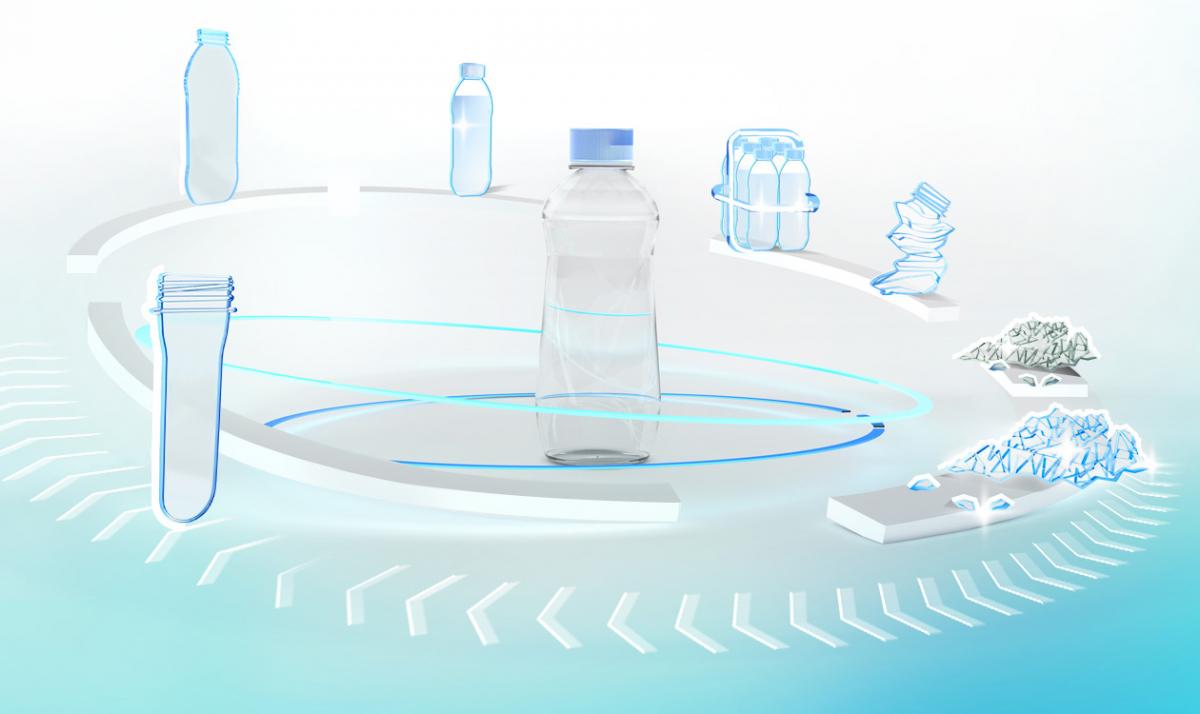Can plastic packages be sustainable? Yes, if they are resource-economically produced and kept in a closed cycle. Krones offers a solution for each and every step of the process.
The traditional path for a PET bottle at Krones begins with stretch blow-moulding – but for a year or so the group has expanded its expertise to cover preform production as well. MHT’s product range includes a sophisticated high-tech injection-moulding tool that achieves outstanding results even with a flakes content of over 70% rPET.
During stretch blow-moulding, filling, closing and labelling, Krones’ long decades of experience in handling PET containers is impressively manifested. For the entire bandwidth of beverages– from water, CSDs and beer to milk or juices – producers find the appropriate equipment. Krones is working continuously on improving its existing kit and driving it to optimum cost-efficiency. The new Contiform 3 Speed, for example, undercuts the already very low energy and media consumption of the Contiform 3 Pro still further, by up to 15 %.

From the preform and energy-economical container production and packaging design all the way through to the recycling of used plastics – Krones offers a solution for each and every step of the process.
Focussing on sustainability
But Krones also purposefully pursues unconventional approaches: together with Aptar, the group has developed Flip Lid, for example: the closure links the lid to the bottle, thus preventing plastic waste from reaching the natural environment. Commercial availability of Flip Lid is scheduled as from 2020. For secondary packaging, too, Krones focuses on ecology and economy: in the shape of LitePac, Krones has created a form of secondary packaging that consumes up to 90 % less energy in the production process and even creates 70 % less weight than shrink-packs.
In order to close the circuit, Krones offers MetaPure recycling systems, which convert used PET bottles into food-grade PET and upcycle polyolefins for higher-quality re-use than hitherto.
Junior













